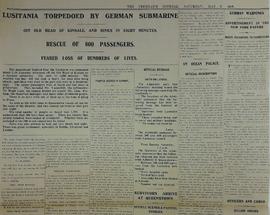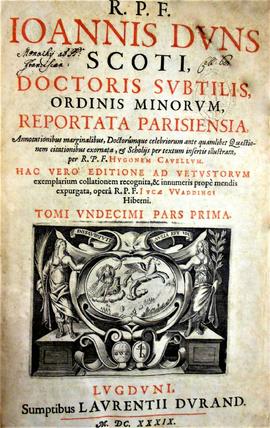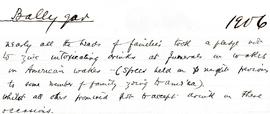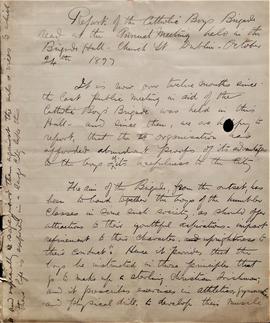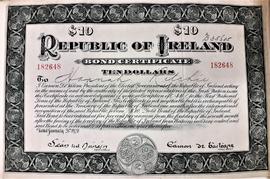Report on Housing Improvements on Church Street
- IE CA CS/5/3/3
- Item
- 1934
Part of Irish Capuchin Archives
A report titled ‘housing in Dublin’ by Fr. Angelus Healy OFM Cap. referring to the corporation-sponsored Church Street and Beresford Street Improvement Schemes. Fr. Angelus refers to the history of Capuchin involvement in the campaign for housing improvement in the areas around Church Street. He wrote: ‘The Capuchins were directly responsible for the improvements that began in 1890, when Father Columbus [Maher] erected the Father Mathew Hall. Later on Father Nicholas [Murphy] obtained possession of the area extending from the Hall down to the Church. This was a very insanitary area, with a number of courts and alleys of ill-repute. It is now occupied by an extension of the Hall and by the garden attached to the Capuchin Friary. Reference is also made in the report into the Church Street Tenement Disaster of September 1913. This article was published in 'The Father Mathew Record', Vol. 27, No. 8 (Aug. 1934), pp 407-16.
Healy, Angelus, 1875-1953, Capuchin priest


